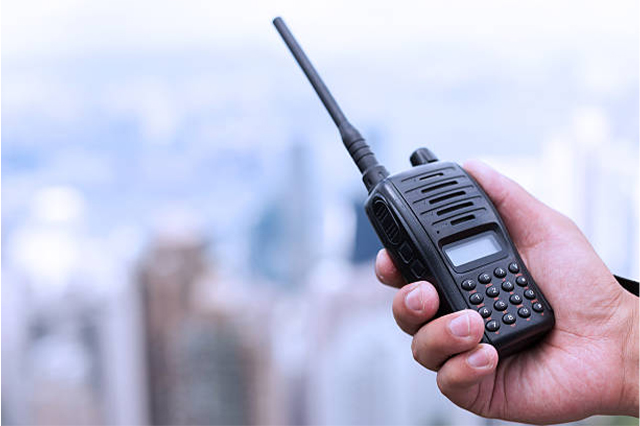Walkie Talkie
Walkie Talkie
A walkie-talkie, also known as a two-way radio, is a portable communication device that allows users to communicate wirelessly over short distances. Walkie-talkies use radio waves to transmit and receive audio signals, enabling real-time voice communication between users. They are widely used in various industries, including public safety, construction, event coordination, outdoor activities, and more. Here are some key features and aspects of walkie-talkies:

Two-Way Communication : Walkie-talkies provide a simple and efficient means for two or more users to communicate with each other in both directions. They operate on half-duplex communication, meaning users take turns speaking and listening.
Radio Frequencies : Walkie-talkies operate on specific radio frequencies within the radio spectrum. Users must tune their devices to the same frequency to communicate with each other. Some walkie-talkies also have multiple channels, allowing users to switch to different frequencies for private or group communication.
Channels and Privacy Codes : Many walkie-talkies have multiple channels to help avoid interference with other radio users. Privacy codes (also known as CTCSS or DCS codes) can be used to further reduce interference by allowing users on the same channel to have private subchannels.
Range : The effective communication range of a walkie-talkie depends on factors such as terrain, obstructions, and the power of the device. In open areas with minimal obstructions, the range can be several miles. In urban or densely wooded areas, the range may be more limited.
Battery Life : Walkie-talkies are powered by batteries, and the battery life can vary depending on factors like usage, power settings, and the type of batteries used. Some models have rechargeable batteries, while others use disposable batteries.
Durability : Walkie-talkies are designed to withstand the rigors of outdoor use and various environments. They may be built to be rugged, water-resistant, or even waterproof, depending on the intended application.
Hands-Free Operation : Some walkie-talkie models offer hands-free operation through accessories like earpieces with built-in microphones or speaker-microphones. This is particularly useful in situations where hands-free communication is necessary.
Emergency Features : Certain walkie-talkies come with emergency features such as a dedicated emergency button that can be pressed to send a distress signal to other users on the same frequency.
Scan Function : Walkie-talkies often include a scan function that allows users to scan through available channels to find and join ongoing conversations.
VOX (Voice-Activated Transmission) : Some walkie-talkies have VOX capability, enabling hands-free communication by automatically transmitting when the user speaks.
Walkie-talkies are versatile communication tools that offer quick and reliable communication in a wide range of scenarios. They are valuable for both recreational and professional use, providing a cost-effective solution for short-range communication without the need for a cellular network.
